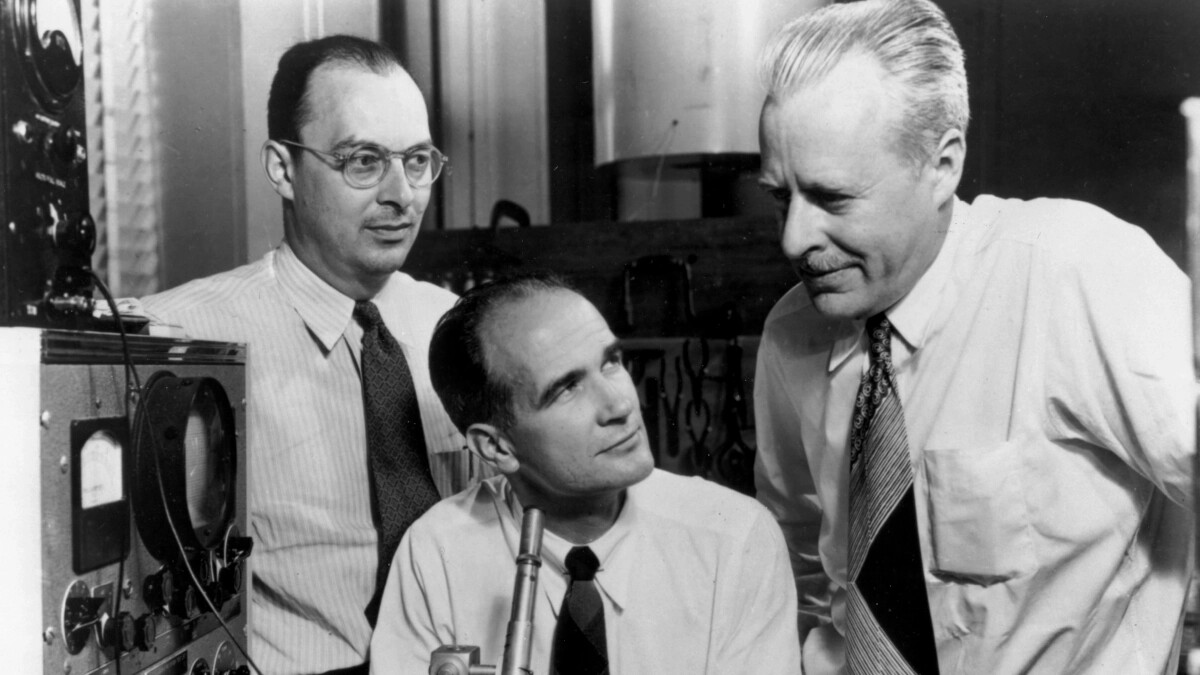In 1915 transatlantic calls relied on as many as 500 connected vacuum tubes
Radar and microwave broadcasting stations (used for coast-to-coast telephony and television) all depended on the vacuum tube until the transistor was created. Three men working at Bell Telephone Labs have found a way to amplify an electric current within a solid without having to depend on a vacuum or heating element. And the power needs for a transistor are much less than those required for a vacuum tube. Also, transistors don’t heat up like vacuum tubes do, allowing many of today’s devices to be small enough to fit in our pockets.
In a related statement foreshadowing the modern technological experience, the announcer says, “Because they are so small, transistors have made possible the miniaturization of many types of electronic equipment.” And the film goes on to observe that transistors “can also be used in multi-channel telephony which increases the number of calls that can be carried along telephone lines at the same time.”
The documentary noted how phone calls could be improved thanks to the transistor. Bell Telephone has used technology to help amplify sounds to make the person on the other end of a long distance call sound like they are right next to you. The transistors, placed directly inside telephones, would allow a farmer, who lives in a rural area away from central exchanges, to hear and be heard loud and clear while on a call.
In the 1953 video, there was hope that one day consumers could play music from a device on their wrist
And while everything telephony was still wired, it’s interesting to see that transistors could be used to help route long-distance calls. And looking ahead to today’s smartwatch, the film claims that thanks to those working to improve the transistor and looking for other uses for it, “you may be able to get music with a flick of your wrist from the so-called Dick Tracy Radio.”
Check out this statement from the movie. “Of course, we can’t build a calculating machine as flexible as the human brain, but even a man-made computer designed to do hundreds of brain-like computational jobs might need an Empire State Building to house it and Niagara Falls to power and cool if thermionic valves had been used in its construction.” So yes, the transistor also helps make the desktop PC and laptop possible.
And these days we keep making transistors smaller and smaller so that more of them can fit in a dense place. As long as this keeps happening and Moore’s Law (the observation that the number of transistors inside a chip doubles every two years) stays alive, faster and more powerful phones, tablets and smartwatches can be made.
#Bell #Labs #film #explains #transistors #lead #production #mobile #devices
